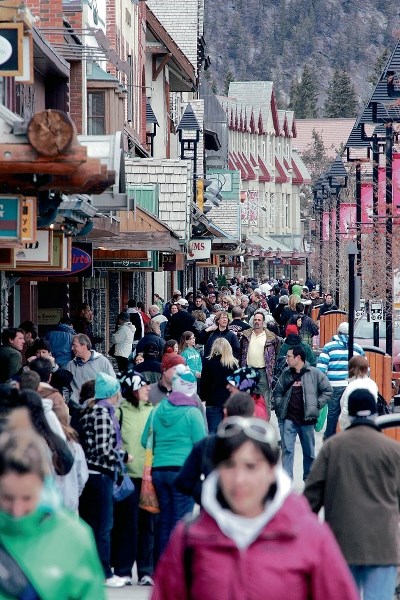Prominent Banff businessman and conservationist Peter Poole has lost a battle in Alberta’s court system over the national park townsite’s residential population cap.
In a decision handed down Friday (Sept. 15), the Alberta Court of Appeal dismissed Poole’s application to seek leave to appeal a Town of Banff decision to approve development of the Homestead Inn and renovation of Melissa’s restaurant.
Poole had argued Banff’s development appeal board failed to comply with Banff’s population cap of 8,000 permanent residents, or to require subdivision approval for a consolidation of lots owned by developers, Fuji Starlight Express.
“The legal questions raised, while significant, do not have a reasonable prospect of success should leave to appeal be granted,” wrote Justice Barbara Lea Veldhuis in her 10-page written decision.
Fuji, which also owns Banff Park Lodge and Bow View Lodge, wants to tear down the existing 28-room Homestead Inn to make way for a new 71-room hotel, with two residential apartment units, as well as renovate Melissa’s restaurant.
Banff’s municipal planning commission approved the developments, but Poole took the matter to the development appeal board. That board upheld the planning commission’s decision.
Poole argues the board incorrectly interpreted the management plan, which he argues directly ties commercial development to population growth pressures and mandate. All decisions take into account an 8,000 residential population cap.
On the other hand, Homestead owners Fuji and the Town of Banff insist the 8,000 cap is not a fixed number, arguing Parks Canada’s intent is not to let Banff’s permanent population get out of hand as the townsite lies within a national park.
Poole said he accepts Justice Veldhuis’ decision, noting it is one more step in trying to get clarity.
“The judge’s decision is about this one building, and I fully accept the judge’s decision, but what is not yet finished is getting clarity in our land use bylaw,” he said.
To that end, Poole plans to bring a delegation to Banff town council next Monday (Sept. 25), where he will ask council to direct administration to draft an amendment to Banff’s land use bylaw.
He said all of Banff’s bylaws must conform to the Banff National Park management plan, but argues sections of the plan concerning growth management leave room for interpretation.
“The management plan foresees a maximum population of 8,000 residents for the Town of Banff, but there are ambiguities concerning how this should be implemented,” Poole said.
“The purpose of this proposed amendment is to avoid confusion by clarifying management plan limits on population growth and fixing them as part of the Town bylaw.”
Poole said numbers matter, but limits have to be clear because uncertainty is bad for business.
“We all know that the speed limit in Banff National Park is 90 km/h, so it’s easy for us to follow the law,” he said. “Let’s bring that same clarity for our planning law.”
Randall McKay, the Town’s of Banff’s director of planning and development, said he’s pleased the Court of Appeal dismissed the case, noting it confirms the decisions of the municipal planning commission development appeal board.
“Most importantly, the decision validates our understanding of the legislative framework for planning and development in Banff under the provisions of the Canada National Parks Act, the Town of Banff Incorporation Agreement, the Banff National Park Management Plan and Banff Community Plan,” he said.
Justice Veldhuis said it is clear Banff’s decision makers must consider the Banff townsite’s permanent population provisions when making decisions about development with the park.
What is less clear, she said, is whether these provisions create a mandatory cap on Banff’s population, or merely fix an aspirational target that municipal authorities must keep in mind when considering development applications.
Justice Veldhuis said even assuming Poole is correct and the management plan establishes a firm limit on Banff’s population – beyond which the planning commission must not approve any new development that increases the town’s population – it is hard to see how this could affect the outcome of this particular appeal.
She said federal census information before the development appeal board suggested that Banff’s population was 7,584 in 2011, increasing to 7,851 in 2016, adding Fuji’s development would increase the population by only nine to 18 residents.
“There was no evidence that Fuji’s development would cause Banff’s permanent population to exceed 8,000 people, as measured by the federal census,” she wrote in her decision.
Poole had argued that while each individual development project may not push Banff over the population limit, the development appeal board must consider the cumulative impacts of all development in the tourist town.
But Justice Veldhuis said it was hard to identify any legal error that is likely to affect this result.
“Even if the board erred by treating the population figures as a target rather than a cap, I do not see how his would have affected how it actually exercised its judgment in this matter,” she said.
Poole still has a similar case before the federal court.




